The World Championship will take place this weekend, from October 8th to 10th, where the top sixteen players of the 2020-2021 season will compete for a $250,000 prize pool, and each of them will also receive $50.000 for participating in the tournament, totaling a $1,050,000 prize pool for the most important Magic: The Gathering event of the year.
And with the arrival of this historic moment, I can hold a special Throwback Magic this week when, instead of talking about a specific deck, we'll talk about the world champions from every year since the first event in 1994, and comment a little about the decks they used at the time, as well as observing the changes in the structure of the event over the years.
Ad
Without further ado, I present to you the Magic: The Gathering world champions, from 1994 to 2019, along with their respective decks used during the Finals matches.
1994
The first Magic: The Gathering World Championship took place in 1994, during the Gen Con in Milwakee on August 19-21, and the champion was the American player Zak Dolan, in the only Worlds in history where it wasn't necessary to qualify in some way and where any player could register and participate.
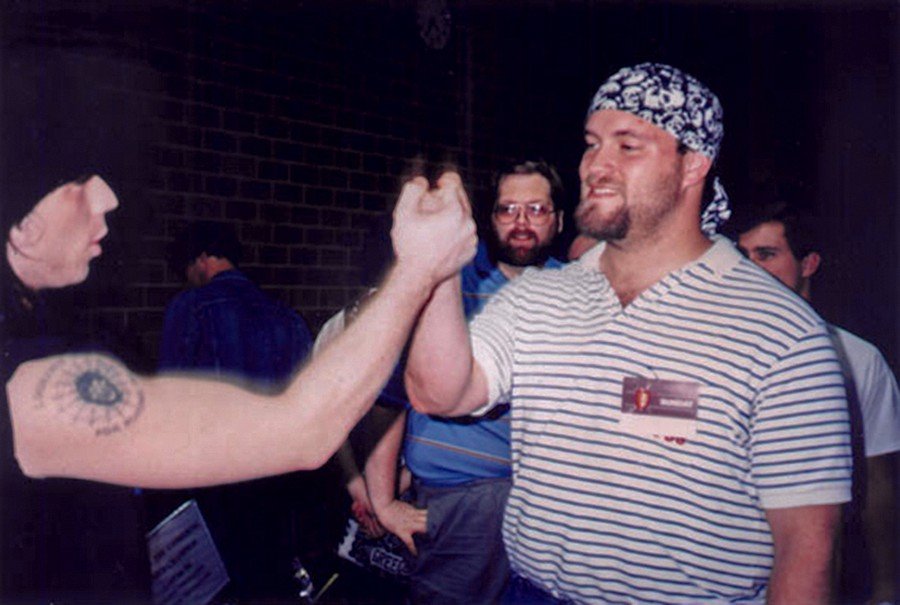
Dolan defeated the French Bertrand Lestree in the finals, in a tournament where the format played is what would now be known as Vintage, but at the time there was no format design concept and essentially all sets were legal, but contained a significant Restricted list, which may explain the amount of one-ofs in the list below.
To win the tournament, Zak used a Prison-Control deck that we currently call Angel Stasis, where the objective was to control the game using removals like Swords to Plowshares and a multitude of other spells in one-ofs until he managed to perform a Stasis “lock” with Serra Angel in play, where the deck then locked both players' resources, but was able to attack with the angel due to its Vigilance ability.
Dolan's prize for winning the first world championship included A trophy, a poker deck with the back of Magic cards and boosters from sets that were no longer available on the market, such as Alpha and Beta.
1995
The 1995 World Championships took place from 5 to 7 August in Seattle, Washington, at the Red Lion Hotel, in the Type II format (now known as Standard) and the winner of the 71-participant event was the Swiss player Alexander Blumke.
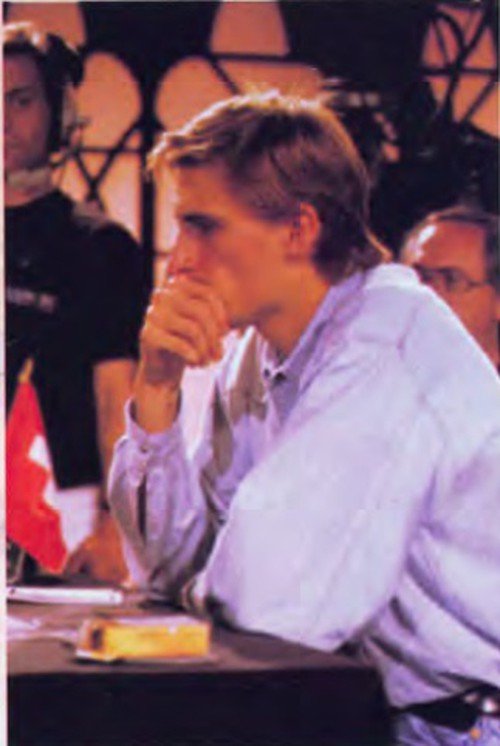
Alexander won the tournament using a deck aimed at abusing discard spells like Hymn to Tourach and Hypnotic Specter in conjunction with accelerators like Dark Ritual and Lake of the Dead to destabilize the opponent's resources, and then use The Rack or Sengir Vampire to win the game while controlling the board with removals.
1996
With the introduction of Pro Tours in 1996, the World Championship went on to mark the end of the competitive season of the year in Magic: The Gathering, as the last event to give players the famous Pro Points, as well as host the event in which the Player of the Year was named.
The third Worlds took place between August 14-18 at Wizards of the Coast headquarters in Seattle, USA, and was the first World Championship after the creation of the Pro Tour.
125 players participated in the event, which included Draft, Standard and Legacy formats, and the Australian Tom Chanpheng was the big winner, with an archetype that left a great legacy, being known in the game until nowadays: White Weenie.
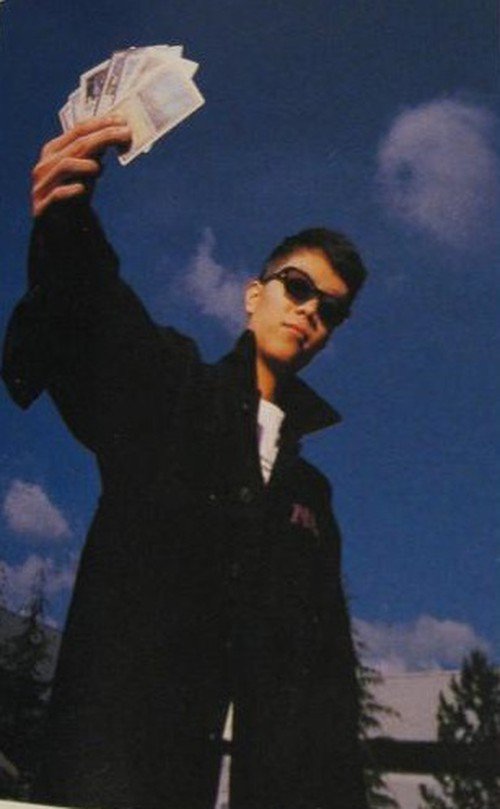
Ad
Tom Chanpheng's White Weenie concept is essentially the same as all the variants we've seen of the deck to date: low-cost creatures that set a significant clock, plus low-cost removals to clear the board of blockers or bigger threats.
The above list also includes some relevant disruptive elements, such as Strip Mine to attack greedy manabases and Armageddon, which could win the game if your board position were higher than your opponent's.
A curious fact about Champheng's deck is that it includes the Sleight of Mind card in the maindeck and sideboard without having any means of casting it. And that was because Tom forgot to list an Adarkar Wastes playset when submitting his decklist, so he was forced to swap them for four basic lands of his choice, and the player chose to include only plains to keep the deck's consistency in activating Order of Leitbur and Order of the White Shield pumps instead of only having access to blue for two dead cards in his maindeck and sideboard.
Tom Chanpheng's victory was immortalized on the exclusive 1996 World Champion card.

1997
In 1997, the World Championships took place on August 11 to 17 at the Wizards of the Coast Gaming Center in Seattle.
153 players participated in the event, the first Magic tournament to be filmed by the sports channel ESPN and with its coverage made by the Sports Illustrated magazine.
The formats were Draft, Standard and Extended and the big winner was the Czech player Jakub Slemr, considered one of the best Magic players of the 90's.
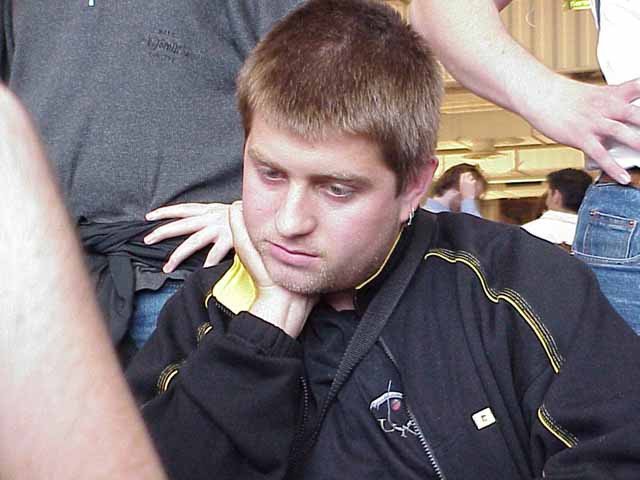
Jakub used a deck known as Five-Color Black, an aggro deck that used a mostly black base, with cards like Black Knight, Knight of Stromgald and Nekrataal along with light splashes of other colors for cards like Incinerate and Earthquake in red, Man-o-War in blue, Uktabi Orangutan in green, and Disenchant in white.
These splashes were granted with some ease, thanks to the inclusion of allied color painlands, as well as lands that add mana of any color, City of Brass, Gemstone Mine, and Undiscovered Paradise.
1998
In 1998, the event took place between August 12-16 in Seattle, United States with the formats Booster Draft, Block Constructed (a format where only the sets from the latest block were legal) and Standard and featured 203 players.
The winner of the tournament was the American player Brian Selden, in a Top 8 that included some of the biggest names in Magic's history such as Jon Finkel, Raphael Lévy, Chris Pikula and Alan Comer.
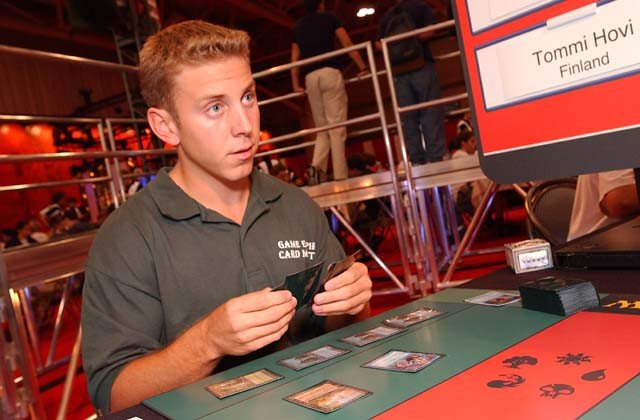
Brian Selden used a toolbox-combo deck known as Recurring Survival, or just Rec Sur, which used the interaction of Survival of the Fittest with Recurring Nightmare to fetch creatures from the deck with Survival of the Fittest, while discarding cards that were powerful at the time, such as Verdant Force and Spirit of the Night and then reanimating them with Recurring Nightmare, while the ability to tutor any creature on a recurring basis gave the list a consistent means of responding to any situation, while the combination of both enchantments gave the deck inevitability, as any dead or discarded creature could return to the battlefield.
Ad
1999
The sixth World Championship took place between August 4-8, at Yokohama Pacific, Yokohama, Japan, and had 208 participants who competed for the title of world champion in Draft, Standard and Extended formats.
The German player Kai Budde was the champion of this edition, defeating the American Mark Le Pine 3-0 in about 20 minutes, the fastest Worlds finals in history.
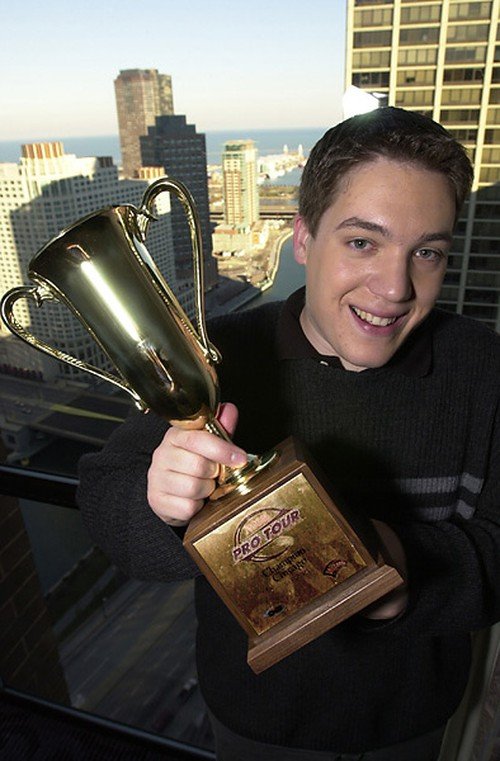
Kai Budde used a list known as Wildfire, which relied on the mana acceleration that cards like Ancient Tomb and City of Traitors offered to quickly cast artifacts that would speed up its game even more, like Fire Diamond, Thran Dymano, and Grim Monolith to then cast Wildfire preferably before the opponent's fifth turn, where both players would then sacrifice all their lands while any creature with toughness 4 or less would be destroyed, essentially “locking in” the opponent's resources while your artifacts remained active to generate mana, which would then be used to play powerful threats such as Covetous Dragon, Masticore and Temporal Aperture.
2000
The 2000 World Championship took place at August 2-6 at the Heysel, Brussels, Belgium, being the first Worlds to take place in Europe. 273 contestants competed in Draft, Block Constructed and Standard formats, and the winner was one of history's most famous players, the American Jon Finkel, who defeated his fellow countryman Bob Maher in the finals.
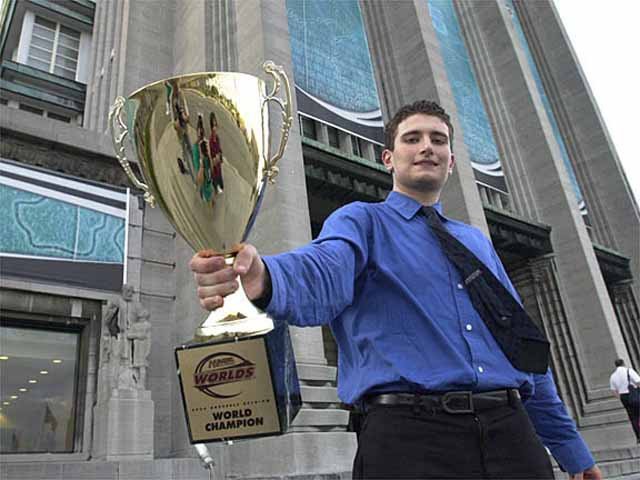
The list used by Finkel is known as Tinker, a deck that takes advantage of the mana accelerations provided by Grim Monolith, Thran Dynamo and Metalworker to utilize powerful artifacts such as Masticore and Phyrexian Processor, while Tangle Wire, Mishra's Helix and Rishadan Port denied the opponent the efficient use of their resources by locking their lands and other permanents.
2001
The eighth World Championship took place between August 8th and 12th in Toronto, Canada. The event formats were Draft, Standard and Extended and a total of 296 players from 51 countries competed for the title and prize.
Dutchman Tom van de Logt was the grand champion of this edition, taking home a prize pool of US$35,000, in a Top 8 where he defeated Alex Borteh, winner of the WSOP (World Series of Poker), the most coveted non-monetary prize that a poker player can win.
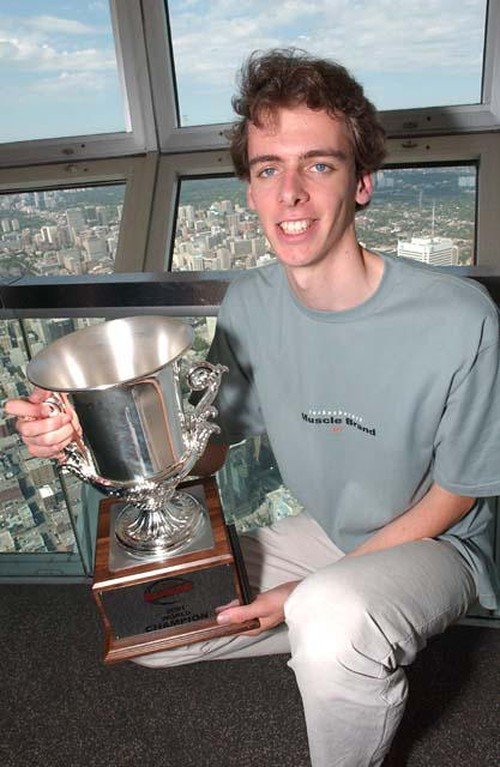
Tom's list was known as Machine Head, which functioned as a Midrange deck in the mold of decks we know as functional today, with discards such as Duress and removals such as Terminate to eliminate the opponent's resources, while high-impact threats like Phyrexian Scuta or cards that offered powerful 2-for-1 effects like Flametongeus Kavu or Blazing Specter ended the game.
Ad
2002
The 2002 World Championship, which took place at Fox Studios in Sydney, Australia, featured 245 players from 46 different countries who played the Draft, Block Constructed and Standard formats.
The winner of the tournament was Carlos Romão, who became the first Brazilian player to win a Magic: The Gathering Worlds, taking home a prize pool of $35,000.
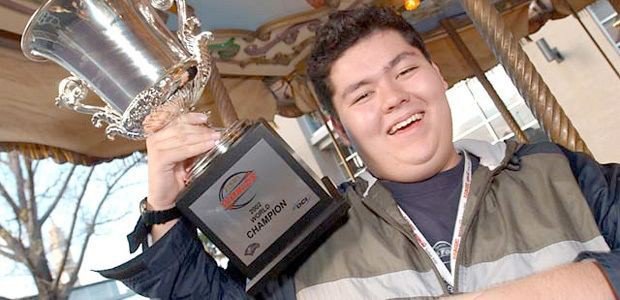
To win the tournament, Carlos used a combo-control deck called Psychatog, which sought to control the game with several card advantage effects and then ended the game with a lock that involved casting Upheaval and Psychatog in the same turn, often not giving the opponent enough time to recover and get back into the game, as Upheaval technically “reset” both players' resources in the match, and Psychatog needed just one or two turns after entering the battlefield to bring the opponent's life to zero.
2003
The tenth World Championship took place on August 6-10 in Berlin, Germany, in Draft, Standard and Extended formats.
312 players from 54 countries took part in the tournament, where the German player Daniel Zink was victorious and took $35,000 of the more than $200,000 given out to the Top 64 players.
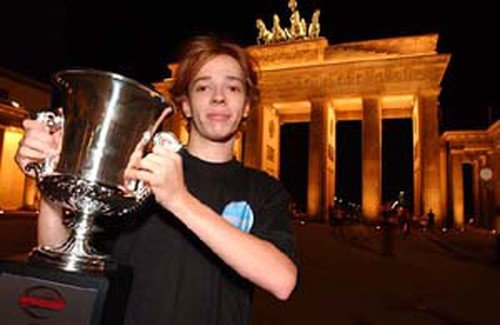
The deck used by Daniel Zink was a control known as Wake, which sought to control the game until it had enough resources to cast Mirari's Wake, which would double the mana available to its controller which would then be used to cast a huge Decree of Justice, creating more tokens than the opponent could handle.
The deck also bet on using the Mirari with the extra mana available to copy all spells cast, essentially doubling its resources over the course of the game.
2004
The 2004 World Championships took place from September 1-5 in San Francisco, California.
In all, 304 players from 51 countries participated in the event, which included Standard, Draft and Block Constructed formats, and the winner was the Dutchman Julien Nujiten, who became the youngest player to win a Magic World Championship, at 15 years old.
Julien took a $52,366 prize pool out of the $208,130 awarded to the Top 64 at the time, a record for the most money a card game player would receive in a single event.
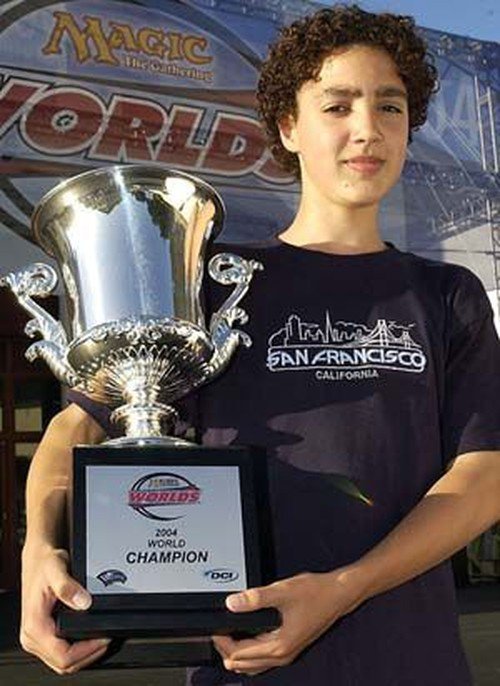
In a format, that at the time was being absolutely dominated by Affinity, Julien used a totally anti-meta deck called Astral Slide, which sought to abuse the Astral Slide card along with powerful ETB effects like Eternal Witness, who could retrieve any card from your graveyard, and Viridian Shaman, who handled virtually every card used by Affinity, to control the game and gain advantage card while speeding up the game long enough to play Akroma's Vengeance and destroy virtually all of Affinity's permanents.
Ad
As a wincondition, the deck featured Eternal Dragon, a card that interacted well with the archetype's game plan while it could be reused from the graveyard in late-game as an evasive threat that wins the game in a few turns.
According to Julien, his list idea came from an article written by the world-famous Brian Kibler.
2005
The 2005 World Champion ran from November 30th to December 4th in Yokohama, Japan and included Standard, Draft and Extended formats, where 287 players from 56 countries competed for a prize pool of $208,130 to be distributed to the Top 64.
The winner of the event was the Japanese player Katsuhiro Mori, who won $35,000.
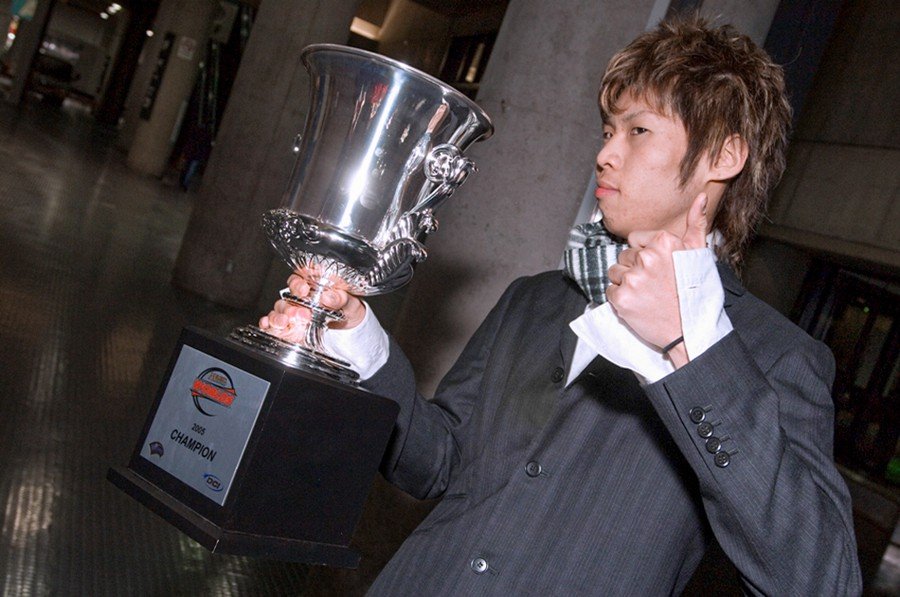
Katsuhiro used a Midrange deck known as the Ghazi Glare to win the event, which took advantage of Glare of Subdual's interaction with Vitu-Ghazi, the City Tree or Selesnya Guildmage to control the opponent's board when creating tokens and tapping them to remove opponent's blockers or attackers, while playing with plenty of powerful cards of the time, such as Kodama of the North Tree, Loxodon Hierarch and Yosei, the Morning Star.
2006
The 2006 World Championships took place at the Carrousel du Louvre, in Paris, France, between 29th November and 3rd December in Standard, Extended and Draft formats.
The winner of the tournament was the Japanese Makihito Mihara, who defeated his fellow countryman Ryou Ogura in the finals, using the Dragonstorm deck.
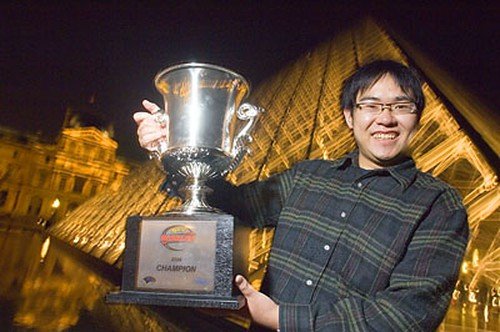
Dragonstorm is a combo deck aimed at playing a streak of spells in a single turn, such as Lotus Bloom, Rite of Flame and Seething Song to speed up mana, in addition to Sleight of Hand and Telling Time to sculpt the hand and Gigadrowse to hold the game or avoid interactions.
With enough mana and at least three more spells played that turn, the deck could then cast Dragonstorm to fetch four copies of Bogardan Hellkite, which when they come into play, will deal 5 damage each to any target, totaling 20 immediate damage against the opponent, plus four 5/5 bodies on the board, enough to win the game at most times.
2007
In 2007, the World Championships took place on December 6-9 in New York City, where 386 players from 61 countries competed for a prize pool of $215,600 in Standard, Legacy and Draft formats.
The winner of the tournament was the Israeli Uri Peleg, who defeated Patrick Chapin in the finals, 3-1.
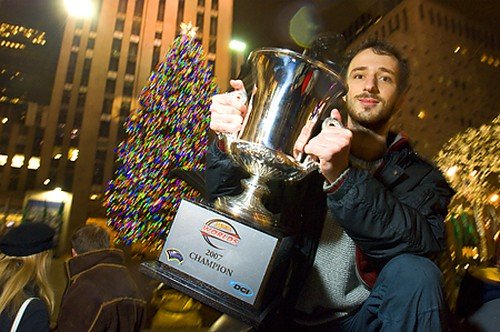
Uri used one of the best decks of the format at the time, Doran Rock, a midrange deck that used low-cost disruptions like Thoughtseize plus low cost, high-power threats like Doran, the SIege Tower and Tarmogoyf while accumulating value with cards like Ohran Viper and the newly released Planswalkers Garruk Wildspeaker and Liliana Vess.
Ad
2008
The fifteenth World Championships took place in Memphis, USA and included Draft, Extended and Standard formats and had a total of 329 entrants from fifty-seven countries.
The winner of this edition was the Finn Antti Malin, receiving $45,000 of the $245,245 that would be distributed to the top 75 finishers.
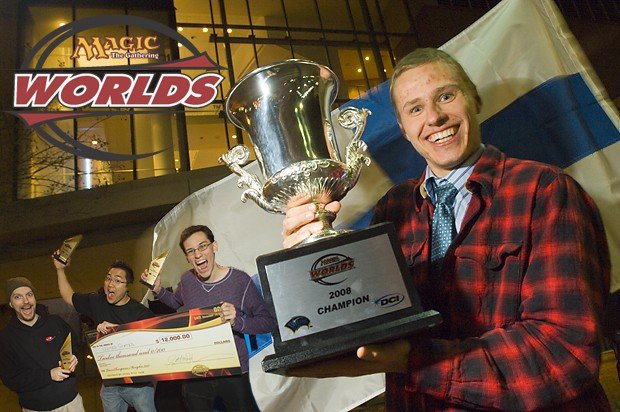
Antti used the deck that was considered the best of the format at the time, Faeries, a Tempo deck that used some of the best cards available, such as Thoughtseize and Cryptic Command, plus a powerful base of permanents that had great synergies, but were also powerful individually, like Bitterblossom, Spellstutter Sprite and Vendilion Clique.
In this way, the deck was able to constantly alternate between the role of beatdown and control throughout the game, while taking full advantage of each of its permanents to deal with the most diverse situations.
2009
The 2009 World Championship took place between November 19-22, at Palazzo Del Congressi in Rome, Italy, with 409 players from 65 countries competing in Draft, Extended and Standard formats, and the event ended with the Portuguese André Coimbra becoming champion and taking a prize of $45,000
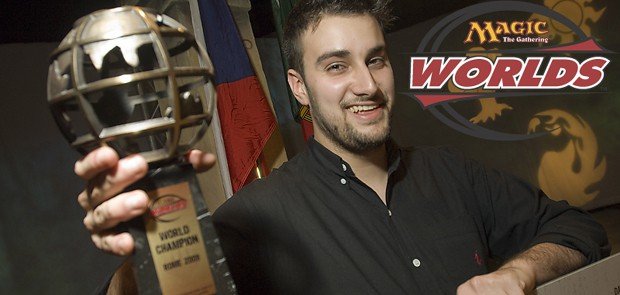
André used an aggro deck called Naya Lightsaber, which sought to take advantage of low-cost, high-powered creatures such as Wild Nacatl and Wolly Thoctar to put pressure on his opponents while removing blockers with Path to Exile and Lightning Bolt.
The deck also used cards that were considered powerful Staples at the time, such as Bloodbraid Elf, a card that would become the pillar of what would be the best deck of the format, Jund, Ranger of Eos that allowed the archetype to fill the hand with cards like Wild Nacatl or Scute Mob, as well as Ajani Vengeant as a card that served as a removal and wincondition at the same time, and what was considered the most powerful creature ever printed at the time, Baneslayer Angel.
2010
The 2010 World Championships took place in Chiba, Japan, between the 9th and 12th of December, in Standard, Draft and Extended* formats.
Guillaume Matignon, a player who also has the title of World of Warcraft TCG World Champion in 2007, was victorious by beating fellow countryman Guillaume Wafo-Tapa in the finals of an event that featured 352 players from 60 countries .
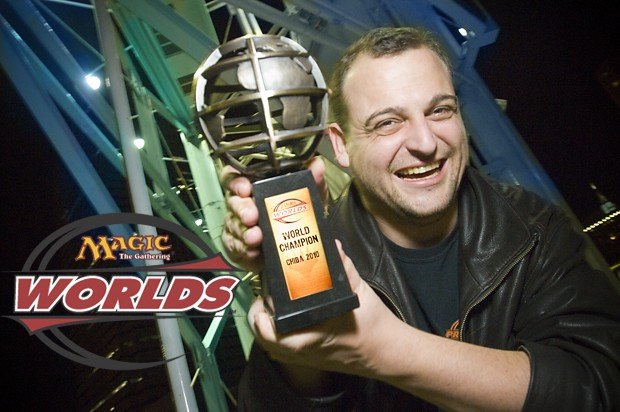
Before Mirrodin Besieged was released, and with it, Sword of Feast and Famine that would bring to Standard horror called Caw-Blade, Jace, the Mind Sculptor already proved to be by far the most powerful card in the format and most decks that achieved good results were using a Planeswalker playset, plus additional copies of Jace Beleren to serve as a “removal” against the opponents' Mind Sculptor, since at the time, the rule regarding planeswalkers were different and there couldn't be two Planeswalkers with the same subtype in play, essentially turning their Jace Beleren into a counter/removal against the opponent's Jace, the Mind Sculptor.
Ad
Therefore, Guillaume's list, a classic Dimir Control, used the best options available in the format to hold games and protect Jace, while it could end the game with Grave Titan, another card that was considered one of the most powerful creatures printed at the time.
2011
The 18th World Championship took place between 17 and 20 November in San Francisco, USA, where 375 players from 60 countries competed in rounds of Standard, Draft and Modern.
The particular highlight of this event was that four members of the then ChannelFireball team reached the Top 8: Conley Woods, Luis Scott-Vargas, Josh Utter-Leyton and Paulo Vitor Damo da Rosa, who became the first player to reach the Top 8 of a Worlds four times.
However, the winner of the tournament was Japanese Jun’ya Iyanaga, who took down a $51,000 prize pool.
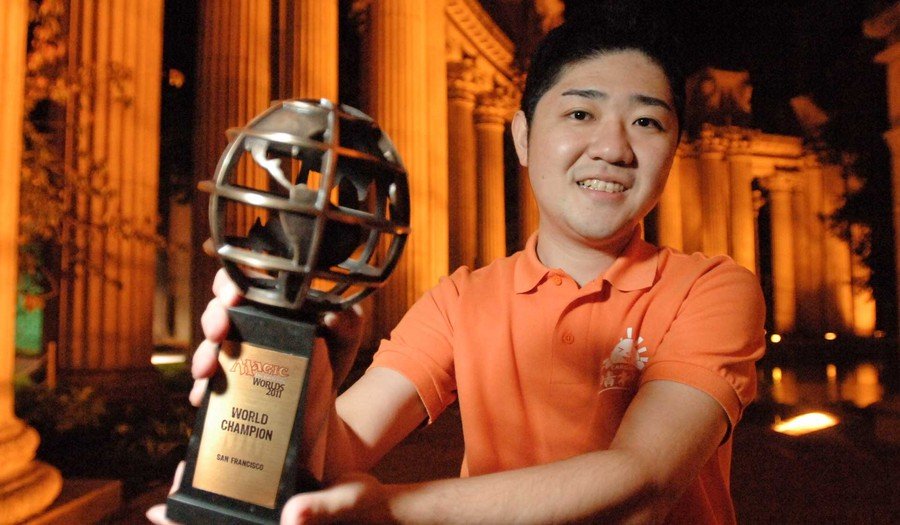
The Wolf-Run Ramp was one of the most famous decks in the Scars-Innistrad Standard and, for a long time, it was considered the deck to beat in the Metagame.
As the name suggests, Wolf Run Ramp used the first turns to speed up the game with cards like Rampant Growth and Sphere of the Suns, which would lead to Solemn Simulacrum, which would then lead to its winconditions: Inferno Titan and Primeval Titan.
Inferno Titan essentially functioned to set the clock and control the board of opponents with more aggressive decks, while containing a manasink ability that increased its power.
Primeval Titan helped the deck accumulate more mana while searching for the deck's two most important lands: Kessig Wolf Run and Inkmoth Nexus.
Kessig Wolf Run essentially turned any creature into a threat by giving it +X/+0 and Trample, an ability we now see on the night side of Tovolar, Dire Overlord.
Inkmoth Nexus didn't do anything relevant on its own, but had a combo-kill with Kessig Wolf Run in late-game, where its controller could activate the Inkmoth Nexus attack and then give it +9/+0 with Kessig Wolf Run, essentially killing the opponent by Infect.
2012
In 2012, the Worlds' structure was entirely changed: The tournament no longer had many players, instead with 16 competitors who qualified through a complicated system, thus ensuring a competition that included the best players in the world.
The formats played were Draft and Modern, and in an event that included huge names such as Paulo Vitor Damo da Rose, Jon Finkel and Martin Juza, the winner was the Japanese Yuuya Watanabe, who won a prize of $40,000 with a deck known and loved by the community to this day.
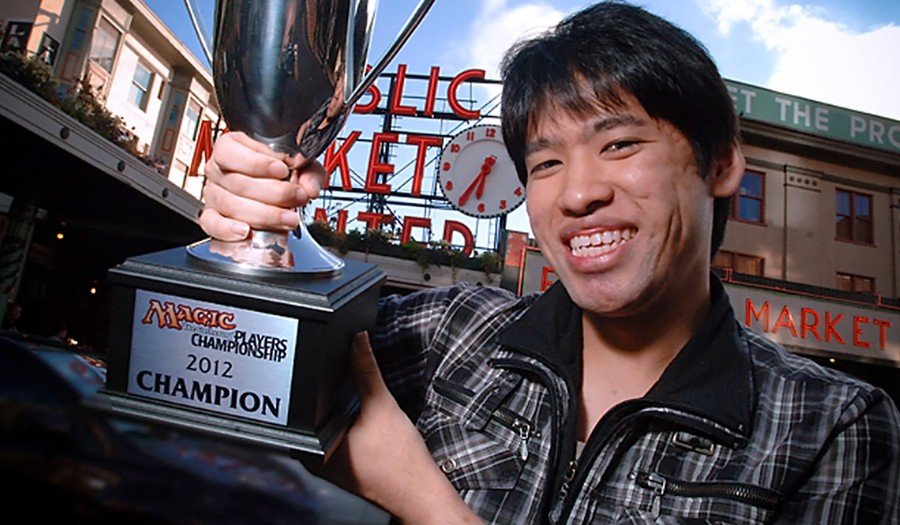
Jund is possibly the most classic of Modern decks and a point of reference for any player who has had the slightest contact with the format at some point.
The deck seeks to make favorable 1-for-1 trades with its discards and removals, while its low-cost threats, such as Tarmogoyf, set the clock, commonly driving players to the topdeck mode, where the individual power and card advantage of permanents like Bloodbraid Elf, Liliana of the Veil, and Dark Confidant often prevail over the opponent's resources.
Ad
Interestingly, Bloodbraid Elf was banned in January 2013 for being too effective for the archetype, and was unbanned in February 2018 along with Jace, the Mind Sculptor.
Today, Jund decks no longer plays Bloodbraid Elf.
2013
The 2013 World Championships took place between July 31 and August 4 in Amsterdam, where sixteen competitors played Draft, Modern and Standard formats, and the champion was the Israeli Shahar Shenhar, who beat the American Reid Duke in the finals, in a match where Shenhar managed to turn the tables against Reid and win 3-2.
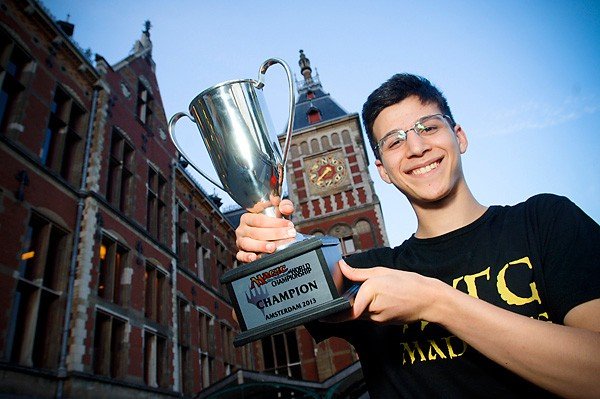
Shahar Shenhar's list was a Control deck known as UWR Flash, which sought to play all its spells on the opponent's turn and contained answers for the most diverse occasions with spells like Mana Leak and Cryptic Command, while cards like Lightning Bolt, Electrolyze, and Lightning Helix served both to hold back the aggressive decks and to increase the pressure placed on its synergistic creature package, which included Restoration Angel, Snapcaster Mage, and Vendilion Clique.
2014
In 2014, the World Championship took place in Nice, France on 2-7 December, in Draft, Modern and Standard formats, with the finals taking place in Standard format.
Shahar Shenhar was the world champion again in 2014, becoming the first player to be crowned two-time champion of the event, and also the first player to win the world for two consecutive years and being awarded with $50,000.
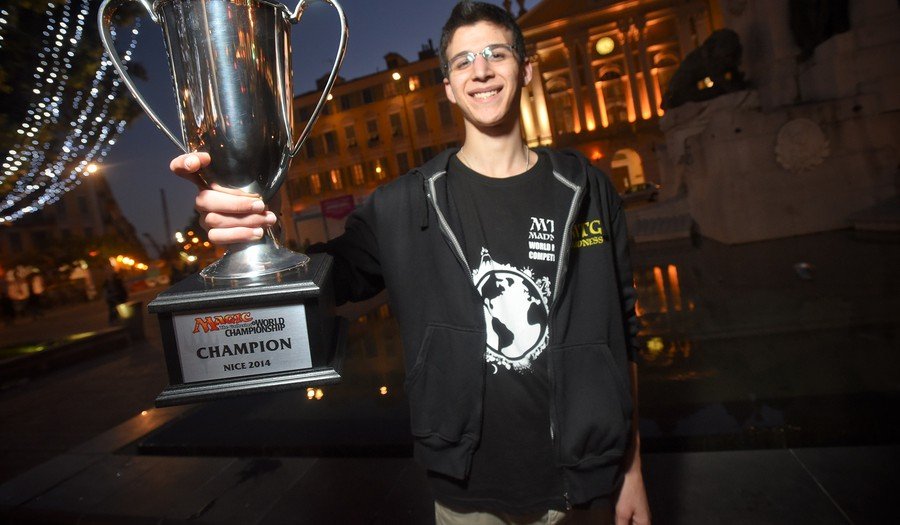
The deck used by Shenhar in 2014 was Sidisi Whip, a Midrange deck that sought to use Whip of Erebos to reanimate cards with significantly powerful ETB effects, such as Hornet Queen, Doomwake Giant and Sidisi, Blood Tyrant itself to get constant value throughout the game.
2015
The 2015 World Championships took place in Seattle during PAX Prime, and the twenty-four competitors competed in the event in rounds of Standard, Draft, and Modern.
American Seth Manfield was victorious over fellow countryman Owen Turtenwald in the finals, using one of the format's most popular decks at the time, Abzan Control, and winning a $50,000 prize pool
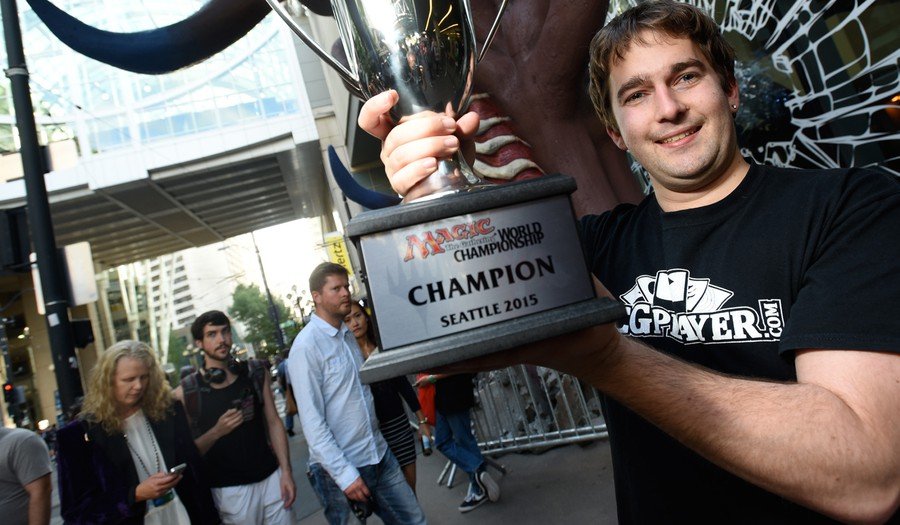
There were many variants of Abzan at the time: Abzan Aggro used a lower curve, betting on cards like Rakshasa Deathdealer and Fleecemane Lion to speed up the clock. The Abzan Control used by Manfield, relied especially on the use of sweepers to hold the initial aggression of other decks, while cards like Courser of Kruphix and Siege Rhino held and stabilized the game so that Elspeth, Sun's Champion could then completely dominate the match.
The advantage Abzan Control had was that virtually every card in the deck offered card advantage, except for the necessary targeted removals in the form of Hero's Downfall and early game discard with Thoughtseize.
Ad
2016
The 2016 World Championship took place between September 1 and 4 in Seattle, with Draft, Standard and Modern formats and the finals taking place in Standard format.
The winner of this edition was the American Brian Braun-Duin, who won the finals against the Portuguese Marcio Carvalho, 3-1, in a long and disputed matches, mentioned by commentator Marshall Sutcliffe as one of the best matches he has ever commented, and took a $70,000 prize pool.
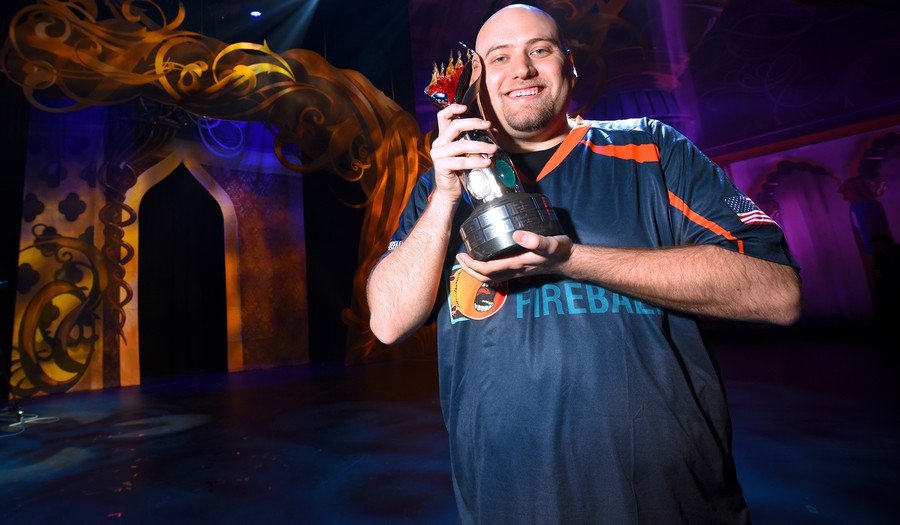
Brian's deck was a variant of the various Bant Company decks that existed at the time, the Bant Humans, which traded the individual power of cards like Spell Queller and Sylvan Advocate in favor of a higher number of synergies between creatures to set a clock faster than the opponent could handle with Thalia's Lieutenant.
Although the deck contains some elements of tribal synergy, all the cards on the list were strong individually, and some see play in competitive formats to this day, such as Reflector Mage and Tireless Tracker, as well as Collected Company being a staple of many Pioneer archetypes.
2017
The 2017 World Championship took place from October 6th to 8th in Boston, USA, in Standard and Draft formats, and the winner was the American William Jensen, who received a prize of $100,000.
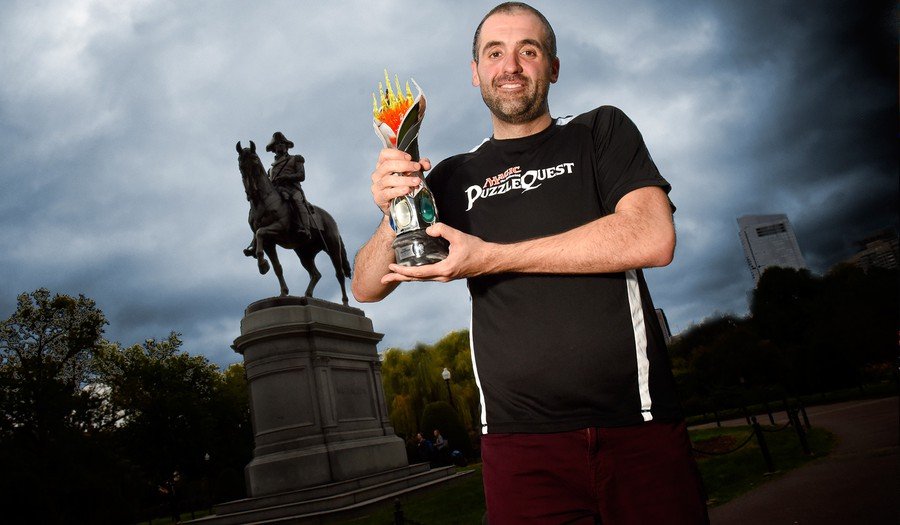
The deck played by Jensen was considered the best, or one of the best, decks of the format at the time, Temur Energy.
This Midrange deck used the Energy mechanic to accumulate several resources throughout the game with several cards that were naturally good, but took advantage of the mechanic to be even better.
Attune With Aether allowed the player to correct their mana while accumulating energy, while Rogue Refiner had a decent body, added energy and even drew a card, and to take advantage of those resources, the deck bet on Longtusk Cub to create aggressive openings against the opponent, Whirler Virtuoso to create an army of 1/1 creatures, and Bristling Hydra as an exponentially growing and difficult to deal with threat.
2018
The 2018 World Championship took place in Las Vegas, from 21st to 23rd of September, with Standard and Draft formats.
An hour before the tournament began, the player Gerry Thompson posted on social media that he would not participate in the event as a form of protest for the state the professional Magic was in.
Thompson's allegations included Wizards' failure to promote the event and its players, poor coverage of the event, lack of rewards for professional and aspiring professional players, and failure to properly punish cheating and other cheating mechanisms and, with his absence, the event had only 23 participants.
The Spanish player Javier Dominguez defeated the Polish Grzegorz Kowalski in a mirror match of what was the absolute best deck of the format at the time, and became the 2018 world champion, taking a prize pool of $100,000.
Ad

The deck was RB Aggro, an aggro-to-midrange deck with an aggressive early game and mostly Mono-Red, but which used a splash to black to access important cards to deal with a portion of the Metagame, such as Doomfall, The Eldest Reborn, and Duress.
The deck's greatest strength lay in how powerful a curve of Bomat Courier followed by Scrapheap Scrounger, Goblin Chainwhirler and then any of the deck's cost 4 permanents created a difficult situation to resolve, as his mid-game threats made up for the aggressive cards at the start of the game, and all of itscreatures had some value coupled with a decent body.
By his victory, Javier was immortalized in the Magic universe, having his image represented on the Throne of Eldraine card, Fervent Champion.

2019
The most recent World Championships took place between the 14th and 16th of February 2020 in Honolulu, Hawaii.
Sixteen players from among the best players in the now-defunct Magic Pro League and the Challengers competed in the event for a prize pool of $1,000,000, the highest prize ever given in Magic: The Gathering history and also the first event played entirely in the platform Magic Arena, a decision that was widely criticized by tabletop fans.
Players ranked included: The World Champion of the previous event, the winner of each of the seven Mythic Championships, the Magic Pro League Top 4 and the Challengers Top 4.
The games were played in Draft and Standard formats, and the winner was the Brazilian Paulo Vitor Damo da Rosa, who beat the Portuguese Marcio Carvalho in the finals and won a prize of $300,000
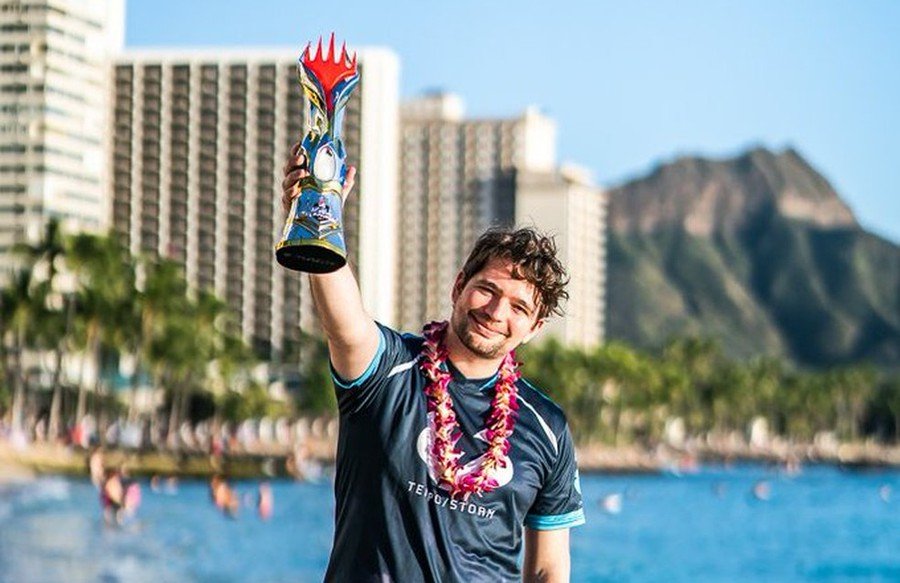
Paulo Vitor's deck was Azorius Control, a deck control in its most classic essence, with several removals like Shatter the Sky and Banishing Light and counterspells like Absorb and Dovin's Veto, ways to filter the top and/or draw cards with Omen of the Sea and Thirst for Meaning, and ways to get a huge card advantage with Teferi, Time Raveler, Narset, Parter of Veils and Elspeth Conquers Death.
To end the game, the deck had Dream Trawler, a difficult to remove threat and that would commonly win matches and especially Control mirrors if it stayed on the board, and Archon of Sun's Grace, which worked better against aggressive decks by significantly delaying the opponent's clock.
For his victory in the World Championship, Paulo Vitor won the Brazil eSports award in the Player of the Year category in 2020, and was also immortalized in Magic: The Gathering in the illustration of the card Elite Spellbinder.

Conclusion
These were the world champions, from 1994 to 2019, and this coming weekend, one more player will join the list of names that will be mentioned and remembered in the story of Magic: The Gathering or, who knows, we won't see players who have been champions becoming two-time champions?
Ad
The 2021 World Championships will be in Draft and Standard formats, played through the Magic Arena, and we will be able to see all the top players competing for the prize and title live through the official Wizards of the Coast channel.
Thanks for reading!
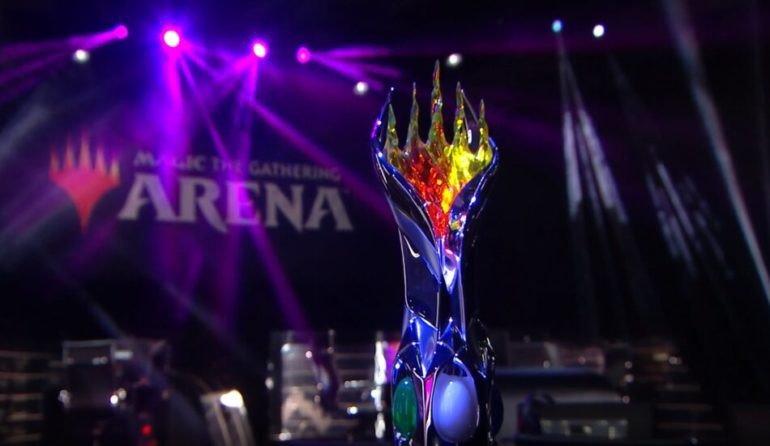


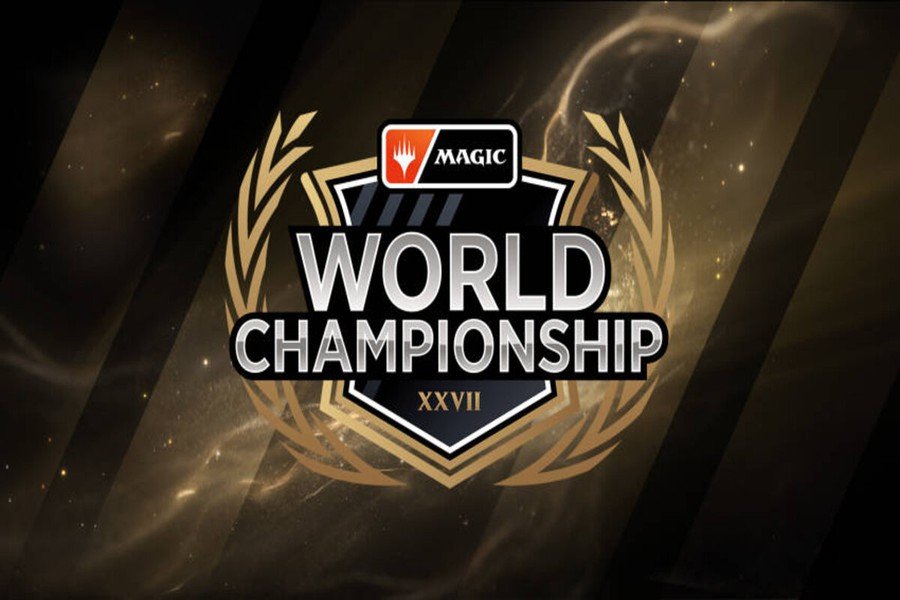
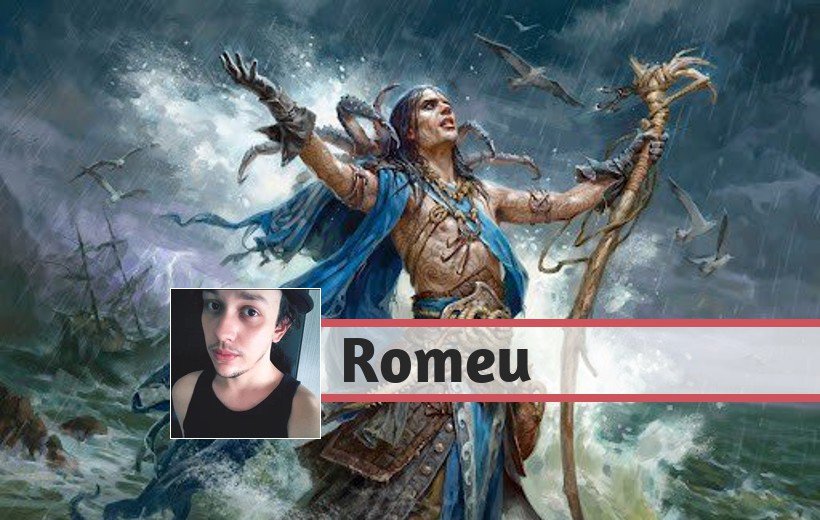



— 评论0
成为第一个发表评论的人